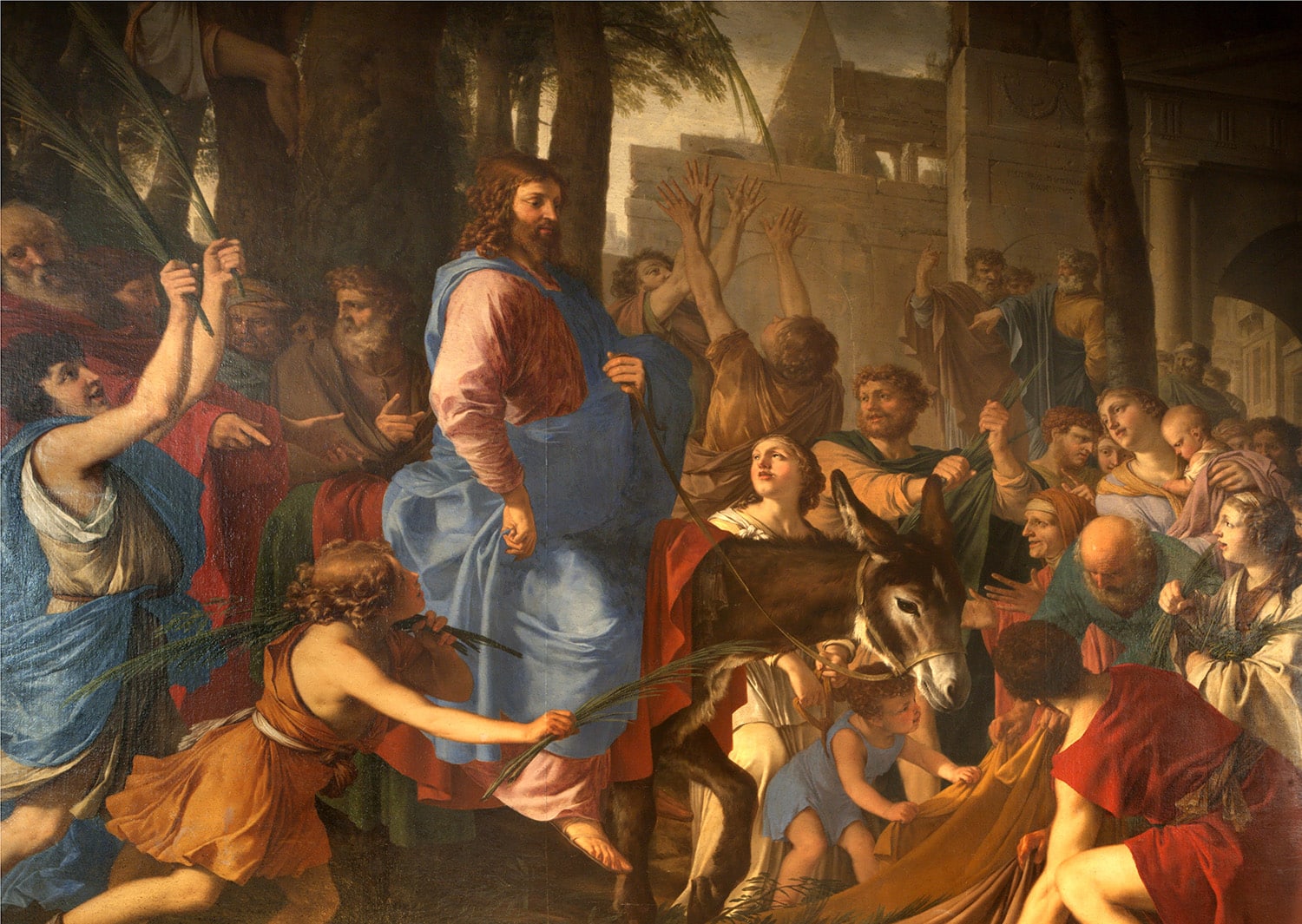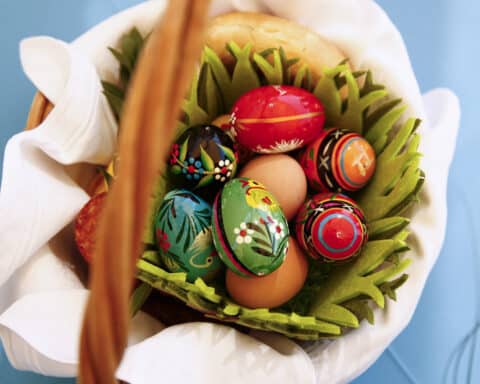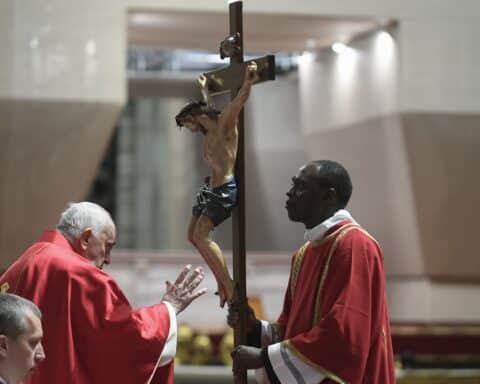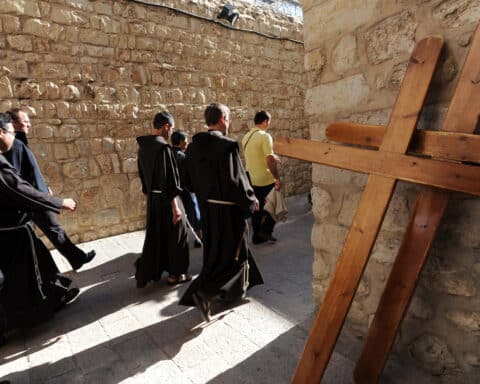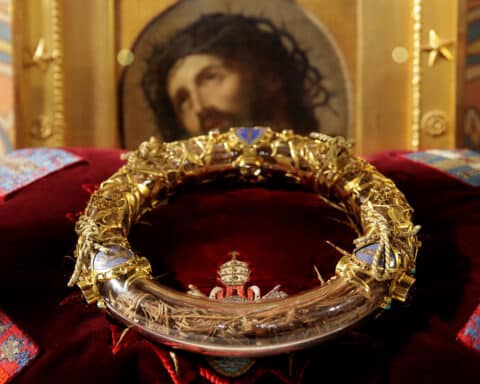Palm Sunday holds a special place in the liturgical year for Catholics worldwide. It marks the beginning of Holy Week and commemorates the Lord’s triumphant entry into Jerusalem. As we prepare our hearts for this significant day, here are six key aspects every Catholic should know about Palm Sunday:
1. Catholics carry palm branches on Palm Sunday in imitation of the Gospel
The use of palm branches on Palm Sunday dates back to the Gospel narratives, where the crowd welcomed Jesus into Jerusalem by laying palm branches on the road before Him. “When the great crowd that had come to the feast heard that Jesus was coming to Jerusalem, they took palm branches and went out to meet him, and cried out: ‘Hosanna! Blessed is he who comes in the name of the Lord, the king of Israel'” (Jn 12:12-3).
Palms are symbols of victory and peace in ancient cultures, and for Catholics, they represent the victory of Christ over death and the reign of peace in his kingdom.
2. Palm Sunday is also known as Passion Sunday
In the Roman Missal, the official title of the feast is “Palm Sunday of the Passion of the Lord,” but Catholics also call this Sunday “Passion Sunday.” This dual identity highlights the contrasting themes of Jesus’ royal reception into Jerusalem and the solemn anticipation of his passion. The liturgy begins with the joyful commemoration of his entry, symbolized by the blessing and distribution of palms. A somber tone descends, however, as the Mass proceeds. A solemn reading of the Passion narrative prepares the faithful for Holy Week’s events.
3. Mass on Palm Sunday includes a procession
One of the most visually striking elements of Palm Sunday is the procession. In many parishes, the faithful gather outside the church to receive blessed palms, then proceed inside in a solemn procession, reenacting Jesus’ entry into Jerusalem. The Roman Missal notes, “Accordingly, the memorial of this entrance of the Lord takes place at all Masses, by means of the procession or the Solemn entrance before the principal Mass or the Simple Entrance before other Masses.” This procession serves as a physical and spiritual journey, inviting participants to reflect on their own journey with Christ. In some countries, like Malta, the processions are especially vibrant.
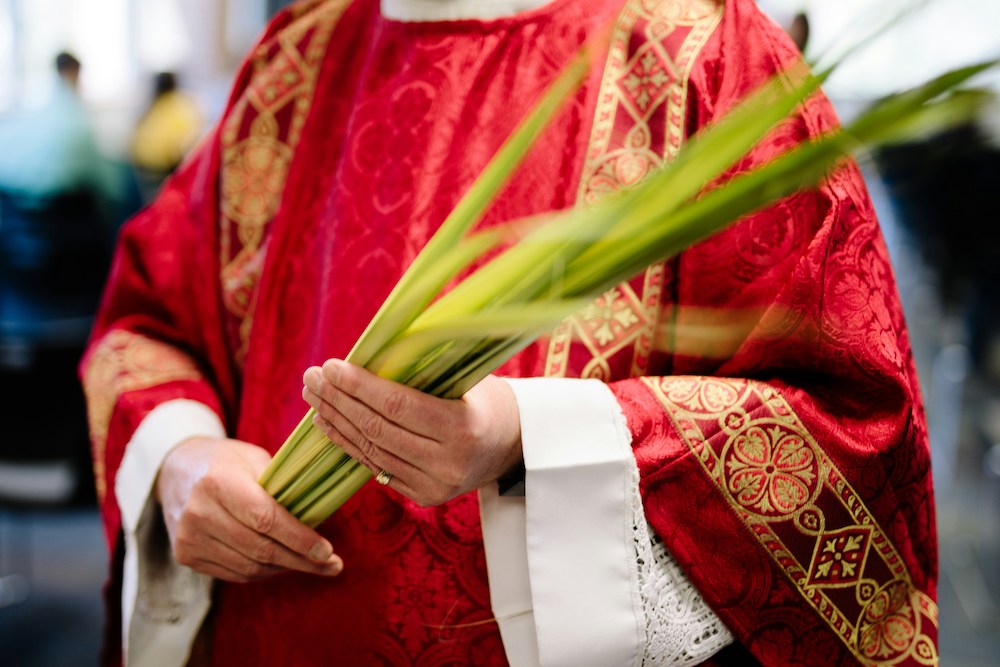
4. Clergy wear red vestments on Palm Sunday
The liturgical color for Palm Sunday is red, symbolizing the blood Jesus shed during his Passion. On this day, the red vestments worn by priests and deacons vividly remind us of Jesus’ suffering and sacrifice for our salvation.
Historically, red has also been associated with royalty. The Gospels depict Jesus’ entry into Jerusalem as a royal procession. The use of red on Palm Sunday can also be seen as a reflection of Christ’s kingly dignity, despite the path of suffering He was about to endure.
5. The Passion narrative has a central role in the Palm Sunday Mass
The story of Jesus’ death is a central part of the Palm Sunday liturgy. It recounts the events leading up to the Lord’s crucifixion, from the Last Supper with his disciples to his death on the Cross. Listening to the Passion narrative, the faithful are invited to meditate on the depth of Christ’s love and the reality of human sinfulness.
6. Palm Sunday should be observed as a day for reflection and renewal
Palm Sunday offers Catholics a special opportunity for reflection and spiritual renewal. It marks the start of Holy Week, a time to contemplate the mysteries of Jesus’ passion, death, and resurrection. The faithful are encouraged to participate fully in the Holy Week services, entering the Paschal Mystery with open hearts and minds.
The Passion narrative also prompts Catholics to examine their own lives. In a Palm Sunday homily, Pope Francis pointed to the characters in the Passion narrative and asked, “Where is my heart? Which of these persons am I like?”
As Palm Sunday approaches, Catholics everywhere can embrace the rich traditions and profound symbolism of the feast. By doing so, we deepen our faith, draw closer to Jesus and prepare ourselves to experience the joy of Easter with renewed hearts.

